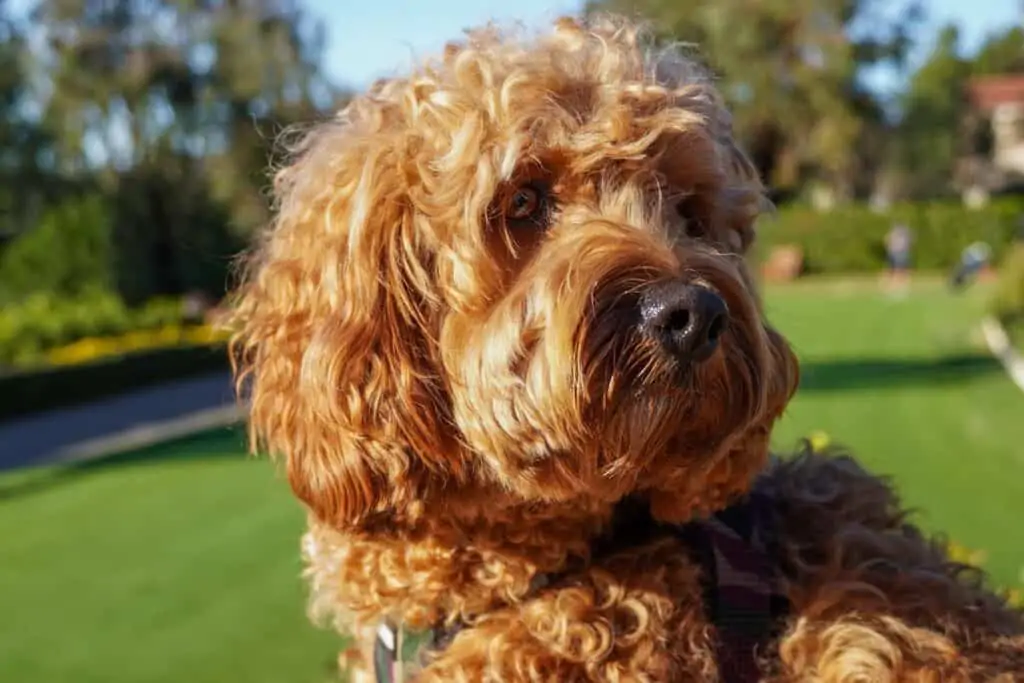Male vs Female Cavapoo – [Which is Best?]
If you’re considering adopting a Cavapoo, you might be asking yourself whether a male or female dog will be a better fit for your lifestyle. Many people think that a male dog’s behavior will be very different from a female’s behavior—but differences based on gender are not as extreme as you might expect.
The major factor that determines your dog’s physicality and behavior is breed. Once you’ve decided on a breed, gender plays a small role in determining behavior. The traits a dog displays are either learned or inherited from the parents.

There are a few differences between female and male Cavapoos, but they are small. Read on to learn about the key differences and how to decide whether a female or male Cavapoo is right for you.
Physical Differences
When it comes to size, color, and coat, the differences between the female and male Cavapoo are almost non-existent. Many people have a hard time distinguishing between the two sexes!
Size
Male Cavapoos are more likely to be slightly larger than females, but size varies from dog to dog. It’s normal for a female Cavapoo to be just as large or larger than a male Cavapoo. A dog’s size is primarily dependent on individual genetics and whether or not he received adequate nutrition during critical developmental phases.

Coat
The coats of female and male Cavapoos are indistinguishable. The main factor determining coat type in a Cavapoo is which parent (the Cavalier King Charles Spaniel or the Poodle) had the dominant genetic coat trait.

Lifespan
There is anecdotal evidence to suggest that female Cavapoos live longer than males, but the science on this is murky. On the whole, Cavapoos of both sexes live longer than large breed dogs, and a dog’s lifespan will be very dependent on his overall quality of life.

Adolescence
The primary physical differences between the female and male Cavapoo present themselves during adolescence, and only with unneutered or unspayed pups. Adolescence is when your dog will start to enter full maturity and experience hormonal changes that affect their bodies.

Most of the changes you will notice in your dog during this time will be behavioral, but there are some physical changes you should also be aware of, especially if you do not plan to spay or neuter your dog.
Female Physical Changes During Adolescence
An unneutered female Cavapoo will start to go through estrus during adolescence. She will experience a heat cycle, including menstruation or bleeding. If you do not plan on having your dog spayed, you should be prepared to deal with the physical “consequences” of her heat cycle, which can be quite messy.
Male Physical Changes During Adolescence
The major physical change that an unneutered male dog will go through during adolescence is the descent of the testes.
Both dogs are likely to begin shedding during adolescence.
Behavioral Differences
The behavioral differences between female and male Cavapoos are usually minor and often misrepresented. There is anecdotal evidence to suggest that males are more prone to aggression than females and that females are more likely to be docile or quiet.

There is also anecdotal evidence to suggest that female Cavapoos are “wilder” and more disruptive than males. At the end of the day, a dog’s behavior is very dependent on his unique genetics and upbringing.
If you want to understand your dog’s behavior, you’re better off examining his parents and his background than relying on anecdotal evidence based on gender.

That being said, some behavioral changes in unaltered female and male Cavapoos do present themselves during adolescence. You can often alleviate these behaviors by spaying or neutering.
Female Behavioral Changes
As a female enters adolescence, she will become either receptive to or aggressive toward a male dog’s advances, depending on the stage of her heat cycle. If she is in a receptive stage, she may be prone to wandering or escaping in an attempt to find males. She may also begin to mark because urine is a way of letting a male dog know that she is ready to mate.

Believe it or not, female dogs also exhibit humping behaviors during adolescence and beyond! Many female dogs hump to display dominance or simply because they get excited during play. It’s perfectly normal for dogs of both sexes to hump.
Male Behavioral Changes
Male dogs will also begin to mark during adolescence. For the male, urinating is a way of marking his territory. Marking during adolescence can also happen even if your dog is fixed, regardless of sex.

Male dogs are prone to escape if a female in heat is nearby.
Male dogs may also begin to display humping behaviors during adolescence. These can be curbed somewhat by neutering, although it’s also common for neutered dogs to hump. Male dogs are more likely to hump than female dogs and will engage in the behavior more often.

Some male dogs will experience increased aggression during adolescence and may display more territorial behaviors. Again, this is very much dependent on the dog, its genetics, and the way it has been raised.
Neutering sometimes reduces aggressive tendencies in male dogs, but it is not a silver bullet. The best way to deal with aggression in your dog is by working with a professional behaviorist to manage and reduce the behavior.
Summary
To sum up, here are some of the key differences between the female and male Cavapoo.
Males
- May be slightly larger than females
- May not live as long as females (though the science to back this up is weak)
- More likely to show aggression during adolescence
- More likely to hump during adolescence
Females
- Will go through a heat cycle if not spayed
- Likely to begin marking during adolescence
- May be smaller than males
As you can see, the differences between the female and male Cavapoo are slight. Most of the differences you may see will present themselves during adolescence and can be alleviated by spaying or neutering your dog.
The most important things to consider when adopting a dog are the dog’s energy level, intelligence, and need for stimulus. These traits will tell you whether or not a dog will be a good fit for your family, and they are more determined by breed than by gender.
Learning about a dog’s background will give you a much more accurate idea about what to expect than relying on gender-based evidence. We recommend meeting a dog’s parents, if possible, and learning as much as possible about the dog before you decide to adopt.
At the end of the day, either a female or male Cavapoo can be a wonderful addition to any family!